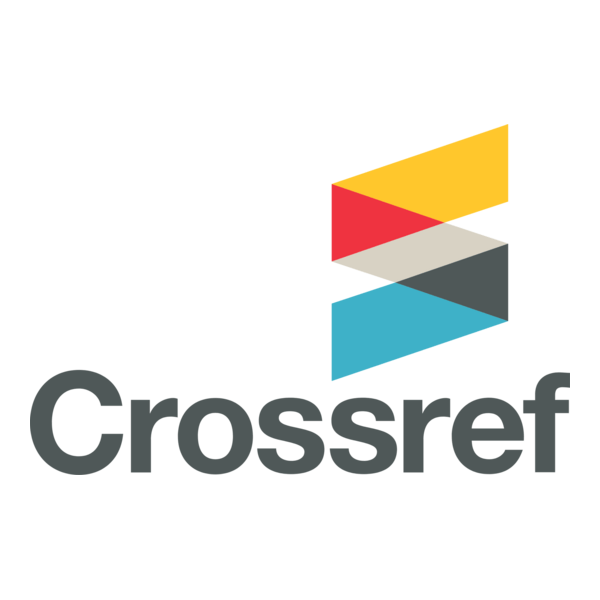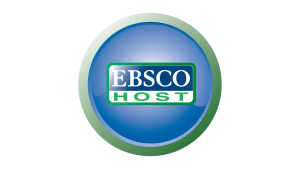Monitoring Technological Processes in the Automotive Industry
DOI:
https://doi.org/10.37886/ip.2024.002Keywords:
measurement, business processes, technological processes, performance indicators, Cpk (process capability), OEE (overall equipment efficiency), ROI (return on investment), monitoring system, automotive industryAbstract
Background and Originality: The purpose of the presented research was to enhance the understanding and management of key performance indicators (Cpk, OEE, and ROI) in the automotive industry. The originality of the study stems from its emphasis on process technological performance and digitalization of measurements, which are crucial in today's industry.
Method: The research was based on a case study, involving data analysis, the utilization of a Cpk measurement system, and event tracking through a logbook. The theoretical framework is based on measuring process technological performance and its connection to financial outcomes.
Results: In the third phase of optimization, significant improvements were recorded in the indicators, including higher Cpk, OEE, and ROI values. These enhanced indicators led to compliance with final product specifications and concurrently increased production operational efficiency. Digitalization of measurements allowed for the rapid detection of process deviations and real-time adjustments in measurements.
Society: Preliminary research results already make a substantial contribution to the automotive industry by emphasizing the crucial role of the business and technological performance measurement system and digitalization in improving operational efficiency. This can support enhanced process management and add value to social responsibility and environmental protection.
Limitations/Further Research: Research limitations are related to the case study approach and temporal and financial constraints. Further research is recommended to delve into correlations between process technological performance indicators and financial outcomes and expand the study to other industries.
References
Adamides, E. D. (2015). Linking operations strategy to the corporate strategy process: a practice perspective. Business Process Management Journal, Vol. 21 Issue: 2, 267 - 287.
Agostini, L., Nosella, A., & Soranzo, B. (2017). Measuring the impact of relational capital on customer performance in the SME B2B sector: The moderating role of absorptive capacity. Business Process Management Journal, 1144 - 1166.
Aized, Tauseef. (2012). Total Quality Management and Six Sigma. Rijeka: InTech.
Baciarello, L., & Schiraldi, M. M. (2015). A Proposal for a Management-oriented Process Capability Index. International Journal of Engineering Business Management, 7, 7-26.
Barnes, D., & Hinton, M. (2008). The Benefits of e-business Performance Measurement Systems. Oxford: Elsevier Ltd.
Batocchio, A., Ghezzi, A., & Rangone, A. (2016). A method for evaluating business models implementation process. Business Process Management Journal, Vol. 22 Issue: 4, 712 - 735.
Behzadirad, A., & Stenfors, F. (1. Marec 2015). Key Performance Indicators (KPIs). Pridobljeno 5. December 2016 iz Digitala Vetenskapliga Arkivet: http://www.diva-portal.org/smash/get/diva2:853061/FULLTEXT01.pdf
Bisogno, S., Calabrese, A., Gastaldi, M., & Ghiron, N. L. (2016). Combining modelling and simulation approaches: How to measure performance of business processes. Business Process Management Journal, Vol. 22 Iss 1, 56 - 74.
Bititci, U. S., Ackermann, F., Ates, A., Davies, J., Garengo, P., Gibb, S., . . . Firat, S. U. (2011). Managerial processes: business process that sustain performance. International Journal of Operations & Production Management, 101-122.
Borgoni, R., & Zappa, D. (2020). Model-based process capability indices: The dry-etching semiconductor case study. Quality and Reliability Engineering International, 36 (7), 2309-2321.
Brocke, J. v., & Rosemann, M. (2015). Handbook on Business Process Management 1 (druga izd.). Heidelberg: Springer-Verlag Berlin Heidelberg.
Carder, B., & Ragan, P. (2004). Measurement Matters. Milwaukee: ASQ Quality Press.
Chatfield, C., & Xing, H. (2019). The analysis of time series: an introduction with R. (Seventh Edition izd.). Boca Raton: CRC Press.
Das, A., Maiti, J., & Banerjee, R. (2012). Process monitoring and fault detection strategies: a review. International Journal of Quality & Reliability Management, 720-752.
de-Felipe, D., & Benedito, E. (2017). A review of univariate and multivariate process capability indices. The International Journal of Advanced Manufacturing Technology, 92, 1687-1705.
Durivage, M. A. (2014). Practical engineering, process, and reliability statistics. Milwaukee: Quality Press.
Economic Commission for Europe of the United Nations (UN/ECE). (2010). Regulation No 87: Uniform provisions concerning the approval of daytime running lamps for power-driven vehicles. Dostopno na [https://eur-lex.europa.eu/legal-content/EN/TXT/?uri=CELEX%3A42010X0630(03)].
Economic Commission for Europe of the United Nations (UN/ECE). (2014). Regulation No 112: Uniform provisions concerning the approval of motor vehicle headlamps emitting an asymmetrical passing-beam or a driving-beam or both and equipped with filament lamps and/or light-emitting diode (LED) modules. Dostopno na [https://eur-lex.europa.eu/legal-content/EN/TXT/PDF/?uri=CELEX:42014X0822(02)].
Garza-Reyes, J. A. (2017). A Systematic Approach to Diagnose the Current Status of Quality Management Systems and Business Processes. Business Process Management Journal.
Gębczyńska, A. (2016). Strategy implementation efficiency on the process level. Business Process Management Journal, Vol. 22 Issue: 6, 1079 - 1098.
Hair, J. F., Black, W. C., Babin, B. J., & Anderson, R. E. (2014). Multivariate Data Analysis. Harlow, Essex: Pearson Education Limited.
Harmon, P. (2007). Business Process Change Second Edition. Oxford: Morgan Kaufmann Publishers.
Horenbeek, A. V., & Pintelon, L. (2013). Development of amaintenance performance measurement framework - using the analytic network process (ANP) for maintenance performance indicators election. Omega, Volume 42, Issue 1, 33 - 46.
Hyötyläinen, T. (2015). Steps to Improved Firm Performance with Business Process Management: Adding Business Value with Business Process Management and its Systems. Wiesbaden: Springer Gabler.
International Organization for Standardization (ISO). 2012. ISO 22514-7:2012 Statistical methods in process management – Capability and performance Part 7. First edition. Geneva: ISO.
International Organization for Standardization (ISO). 2015. ISO 9001:2015 Quality management systems - Requirements. Genava: ISO.
Ivanko, Š. (2007). Raziskovanje in pisanje del: metodologija in tehnologija raziskovanja in pisanja strokovnih in znanstvenih del. Kamnik: Cubus image.
Janiesch, C., Matzner, M., & Müller, O. (2012). Beyond process monitoring: a proof-of-concept of event-driven business activity management. Business Process Management Journal, Vol. 18 Issue: 4, 625 - 643.
Kang, B., Ki, D., & Kan, S.-H. (2012). Periodic performance prediction for real‐time business process monitoring. Industrial Management & Data Systems, 4-23.
Kaplan, R. S. (2010). Conceptual Foundations of the Balanced Scorecard. Boston, Massachusetts: Harvard Business School, Harvard University.
Kaplan, Robert S. in David P. Norton. 2006. Alignment. Boston, Massachusetts: Harvard Business School Publishing Corporation.
Kennerley, M., & Neely, A. (2002). A framework of the factors affecting the evolution of performance measurement systems. International Journal of Operations & Production Management, Vol. 22 Issue: 11, 1222 - 1245.
Kralj, J. (2003). Management: Temelji managementa, odločanje in ostale naloge managerjev. Koper: Fakulteta za management.
Laguna, M., & Marklund, J. (2019). Business Process Modeling, Simulation and Design (tretja izd.). Boca Raton, Florida: CRC Press Taylor & Francis Group.
Lepore, A., Palumbo, B., & Castagliola, P. (2018). A note on decision making method for product acceptance based on process capability indices C pk and C pmk. European Journal of Operational Research, 267, 393-398.
Malatras , A., (Hamid) Asgari , A., Baugé , T., & Irons , M. (2008). A service-oriented architecture for building services integration. Journal of Facilities Management, 132-150.
Melnyk, S. A., Bititci, U., Platts, K., Tobias, J., & Andersen, B. (2014). Is performance measurement and management fit for the future? Management Accounting Research, Volume 25, Issue 2, 173 - 186.
Mundwiller, S. (2018). Statistical Process Control - A Pragmatic Approach. Boca Raton: CRC Press Taylor & Francis Group.
Neely, A., Gregory, M., & Platts, K. (1995). Performance measurement system design: A literature review and research agenda. International Journal of Operations & Production Management, Vol. 15 Issue: 4, 80 - 116.
Panagopoulos, I., Atkin, C., & Sikora, I. (2017). Developing a performance indicators lean-sigma framework for measuring aviation system’s safety performance. Transportation research procedia, 22, 35-44.
Pereira, P., & Seghatchian, J. (2021). Statistical Control of the Production of Blood Components: Use of Process Capability Indexes. Journal of Hematology & Transfusion, 8 (2), 1097.
Pojasek, Robert B. (2003). Lean, Six Sigma, and the Systems Approach: Management Initiatives for Process Improvement. Environmental Quality Management V13 (2): 85–92.
Pyzdek, T. (2003). The Six Sigma Handbook. New York: The McGraw-HIll Companies, Inc.
Santori, Peter R in Alan D Anderson. 1987. Manufacturing Performance in the 1990s: Measuring for Excellence. Journal of Accountancy 164 (5): 141.
Scagliarini, M. (2018). A sequential hypothesis testing procedure for the process capability index Cpk. Quality and Reliability Engineering International, 34 (5), 791-806.
Star, S., Russ-Eft, D., Braverman, M. T., & Levine, R. (2016). Performance Measurement and Performance Indicators: A Literature Review and a Proposed Model for Practical Adoption. Human Resource Development Review, 1-31.
Taticchi, P., Garengo, P., Nudurupati, S. S., Tonelli, F., & Pasqualino, R. (2014). A review of decision-support tools and performance measurement and sustainable supply chain management. International Journal of Production Research, 6473 - 6494.
VDA. (2011). VDA 5 Quality Management in the Automotive Industry - Capability of Measurement Processes (2 izd.). Berlin: Verband der Automobilindustrie e.V. (VDA), Qualitäts Management Center (QMC).
Wilson, B., Provencher, T., Gough, J., Clark, S., Abdrachitov, R., Roeck, K. d., . . . Lawton, A. (2014). Defining a Central Monitoring Capability Sharing the Experience of TransCelerate BioPharma’s Approach, Part 1. Therapeutic Innovation & Regulatory Science, 529-535.
Wysocki, R. K. (2004). Project Management Process Improvement. Norwood: ARTECH HOUSE, INC.
Additional Files
Published
How to Cite
Issue
Section
License
Copyright (c) 2024 Robert Pavlin, Aleksander Janeš

This work is licensed under a Creative Commons Attribution-ShareAlike 4.0 International License.
![]()








